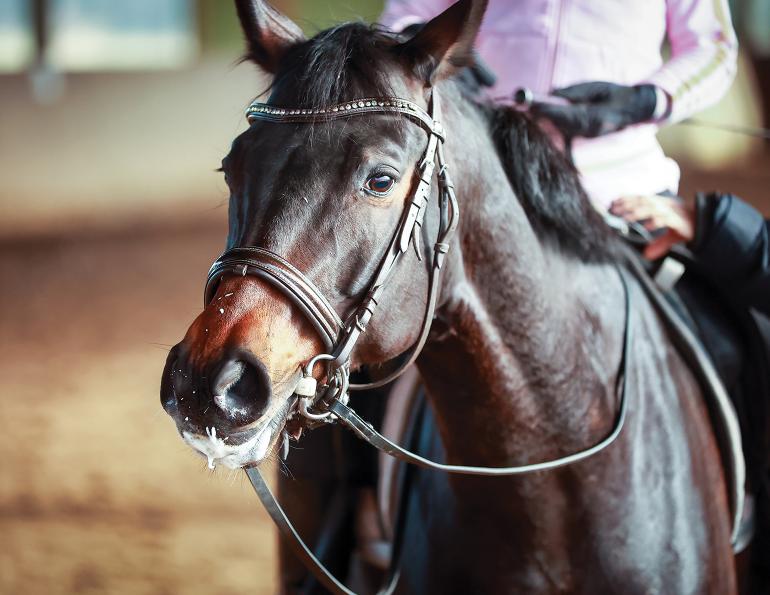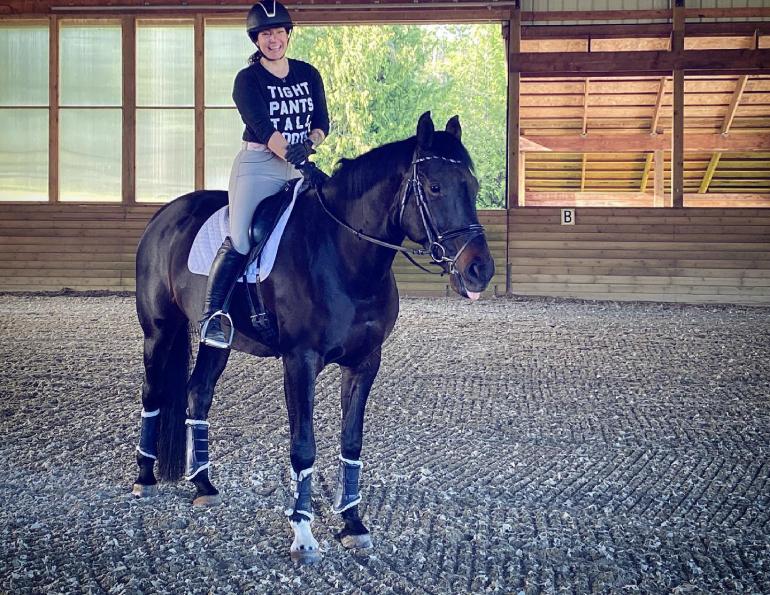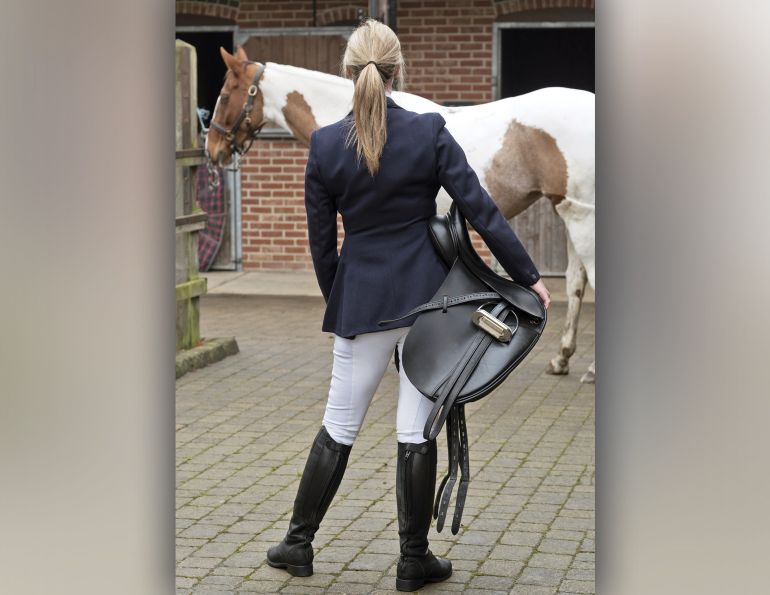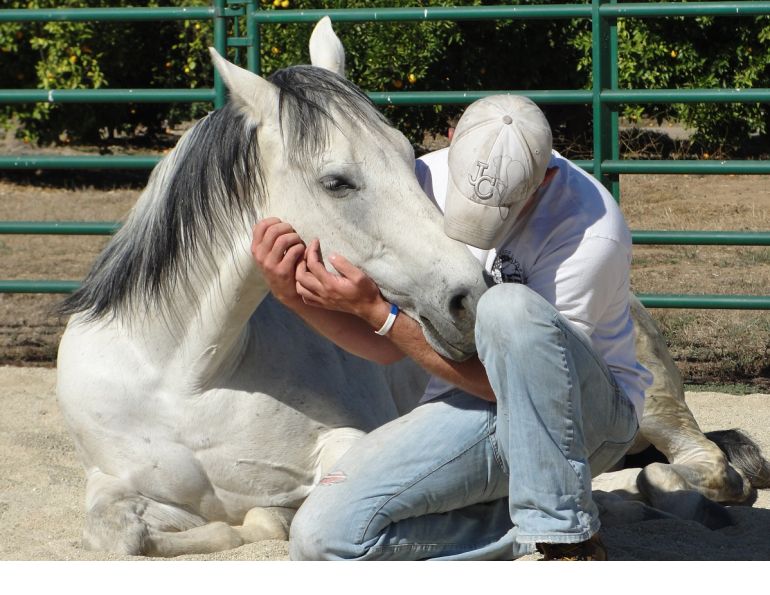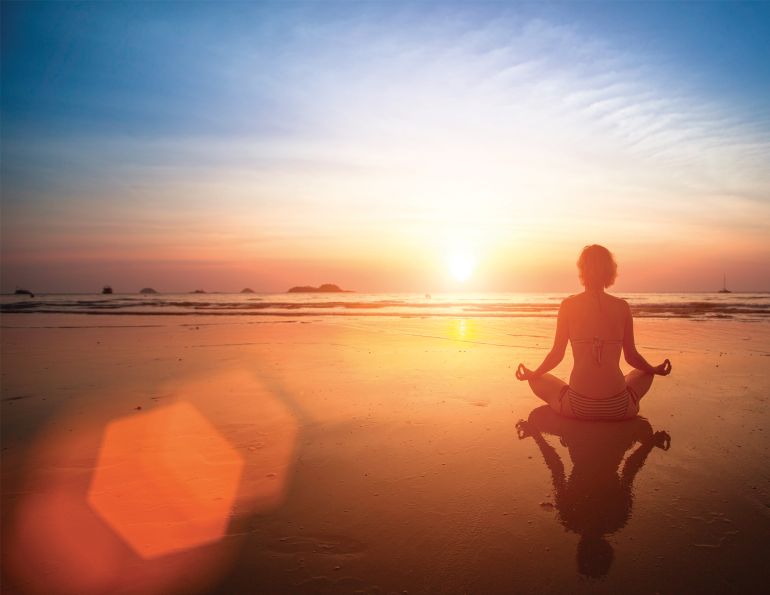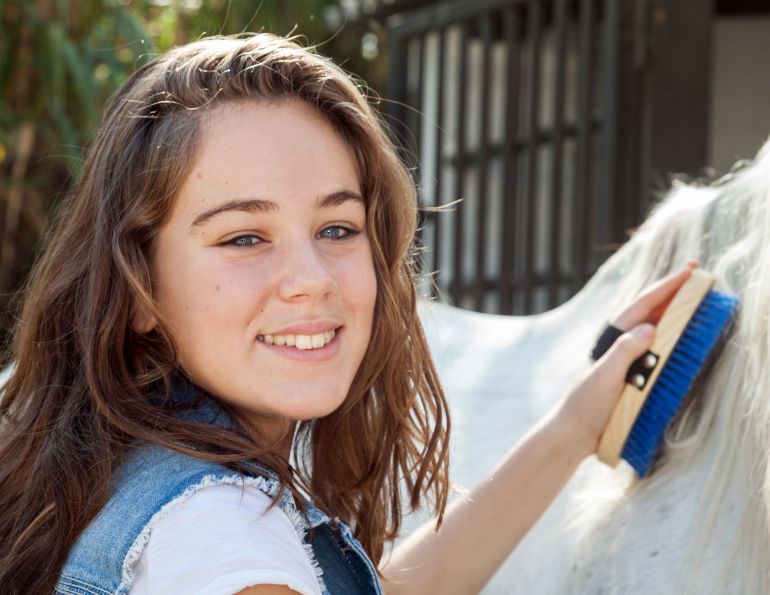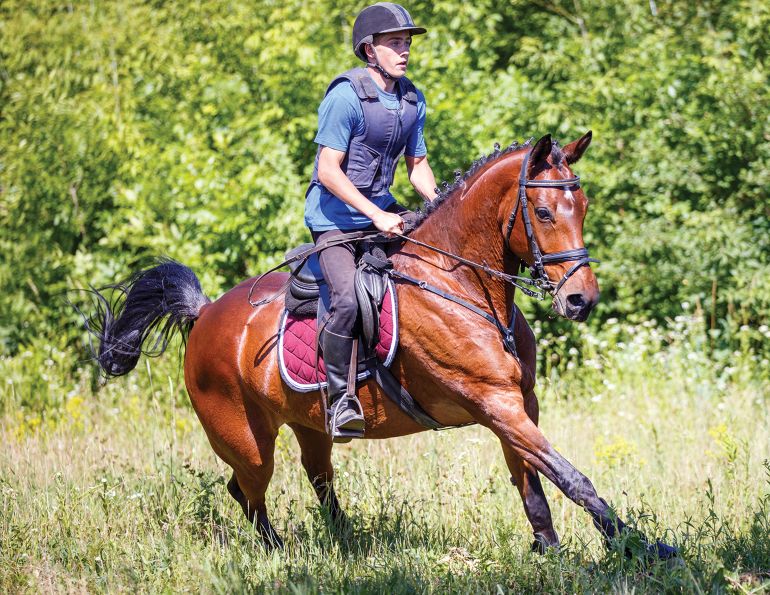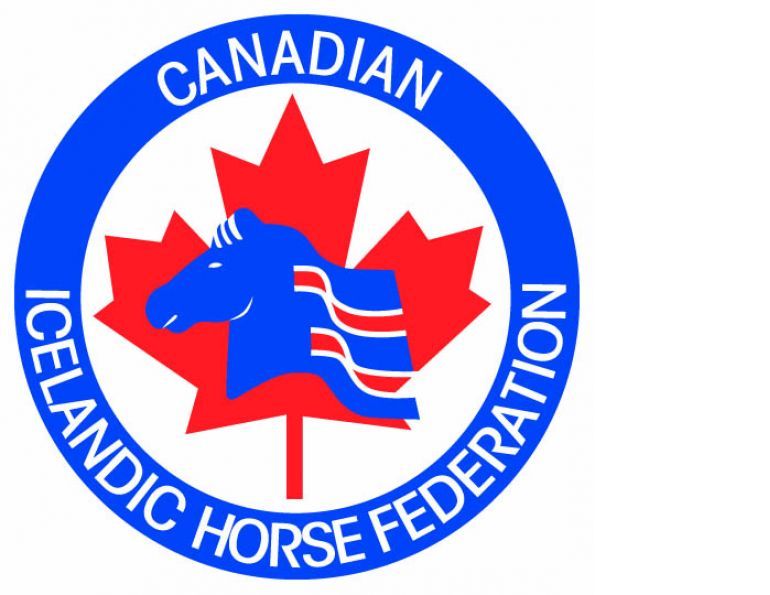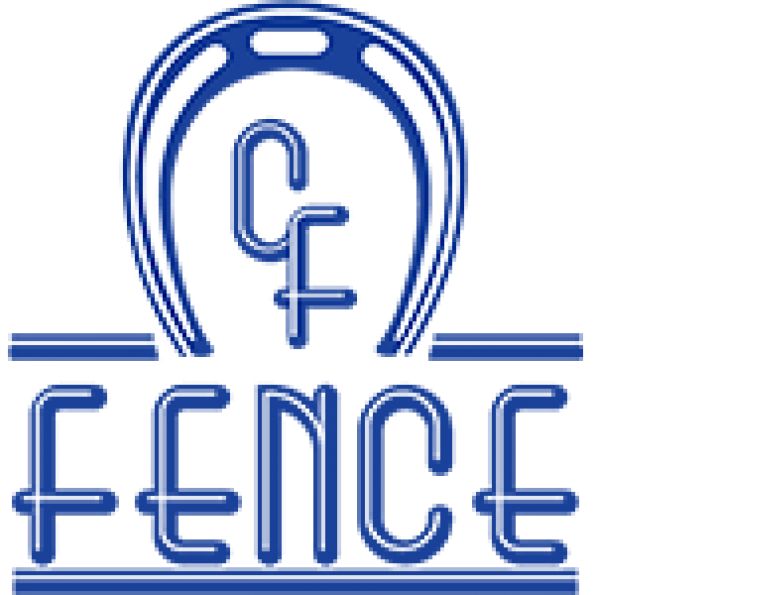By April Clay, M.Ed., Registered Psychologist
If you are like many riders, there are times when you wish you could relax on command. Those are the times when your nerves are making your head spin and your stomach is impersonating a tsunami, or when your horse is so tense and fresh he is practically vibrating. Of course, it’s very difficult to will yourself into a pleasant lull when you most need to. Fortunately, you can learn how to truly relax your body so you can “push the relax button” in times of stress. It just takes a little work. Before we get to technique, consider the myriad of reasons this psychological skill is worth investing in.
Firstly, your body connects you to your horse. All sports are about the power of the body, and some require more finesse. The latter is true of horse sports. It can be compared to practicing your diction in order to communicate distinctly with other people.
For riders, the most important benefit of learning the skill of managing your body is the improvement in the feel or connection with your horse. Excess tension in your body interferes with the communication between you and your horse. To communicate clearly, you need to remove that interference, which can be accomplished by regular practice of relaxation strategies. The payoff is more horse-rider conversations free of conflicting messages that may confuse aids.
A second important reason has to do with the effect that a prolonged unrelaxed state can have on your ride. In the sporting world, energy is the gas that drives all performances. Unfortunately, stress and excess tension can zap the athlete of this much-needed resource. Have you ever noticed how tiring it is to be nervous and anxious? That’s because when your body is in this high state of alert, it uses a lot of energy. Teach yourself how to get to the state of relaxation and you will have a corner on the power market.
Finally, relaxation is the foundation of all other psychological skills, such as imagery, concentration and arousal control. Before you visualize your superior performances, it is important to be relaxed so you pair this feeling with what you are seeing in your mind. Concentration is next to impossible if you are highly charged, as I am sure you have experienced. Arousal control has to do with how well you know the state your body has to be in to perform at your best, and how accurately you can produce it when you need to. In short, if you are going to become good at your mental game, then the skill of managing your own body is a must.
Exercise 1: Breathing Right
To begin, sit comfortably in a chair or bed and place one hand on your stomach and one hand on your chest. Breathe normally. Now ask yourself these questions: How fast is your breath? How fully are you breathing (how far down does it go)?
Now begin to breathe again, this time focussing on dropping your breath low, as if you are breathing through your feet. As you are inhaling, it may be helpful to imagine that you are filling up three separate sections of your lungs. First, concentrate on your abdomen, making it expand with air.
Next, fill the middle portion of your lungs by expanding the chest cavity and raising the rib cage and chest. Finally, allow the upper portion to be filled and you will notice your upper chest expand and your shoulders raise slightly. When you feel “full” begin to exhale by pulling the abdomen in (this is what pulls the diaphragm up), and you should notice your shoulders drop, as well as your upper chest, as the air begins to leave your lungs. Make sure the exhalation is complete, forcing all the air out and letting go of all muscular tension as you do. Say this silently to yourself on the exhale: “As I breathe out I let go of all the tension in my body.”
Now, ask yourself those two key questions again. Do you notice any difference? By simply practicing this exercise, you will begin to notice that the difference becomes more dramatic. This will help you directly experience what it feels like to breathe correctly, and increase your confidence in your ability to regulate your breath.
Exercise 2: Progressive Relaxation
Progressive relaxation involves alternately tensing and relaxing all the major muscle groups in your body, one at a time. The idea behind progressive relaxation is that it will enable you to detect tension and the location of that tension in your body. In other words, it can help you to become more aware of your body. Simply lay or sit down in a comfortable place and alternately tense and relax each major muscle group in your body (your facial muscles, neck, shoulders, chest, arms, hands, buttocks, thighs, calves and feet). Focus on one muscle group at a time, holding the tension long enough for you to know what tension feels like in that particular part of your body. As you then relax and let go of that tension, again, note what that feels like. As you progress through this exercise, you may find increased feelings of heaviness and warmth develop. You may also notice that you experience muscle twitches or spasms as the muscles let go of built up tension. All of this is normal.
Through the course of the exercise, you may have discovered where it is that you keep most of the tension in your body. If you had trouble with the progressive relaxation, it may be that you were trying too hard. Remember that you cannot force yourself to relax, rather it is something that you allow to happen. This is an excellent exercise to practice every night before going to sleep. It is guaranteed to help you fall asleep, and with practice you will be able to spot and consequently release unwanted tension in your body during training and competition.
Exercise 3: Relaxing on Horseback
You can practice taking your energy down a notch by using your imaginative powers. Think of your upper body and arms as being made out of elastic or like a rubber band. This elastic band allows you to move with your horse, to respond in perfect harmony. You may also want to imagine your seat as being a bean bag that can conform exactly to the saddle and move with your horse as it moves, with no interference. Experiment with different images that hold relevance for you, and remember those that have a noticeable impact on your body.
You can also use the cadence of your horse’s gait to tune into the rhythm of your own breathing. Of course, a wild gallop is sure to get your breath and your heart racing at a rapid rate, so the following exercise is best done at the walk while warming up. Breathe into a count of four, counting off four footfalls of your horse. Breathe out to a count of four, while visualizing your breath moving into your horse and connecting you to him. Similarly, on your next inhale, imagine that you are drawing the energy back into your body. Think of it as an exchange, an exercise in connection where you are matching your energy.
Exercise 4: A Riding Meditation
Begin your riding meditation by focussing on several cycles of deep breathing until you feel your body’s tension dissipate and your focus narrow. Gradually allow your focus to shift from your breath to how both you and your horse feel in this moment together. Become aware of how your arms feel, how they connect you to your horse’s mouth. Allow your awareness to travel, as though it is a ray of light. This light is soothing, and flows from the bit, through the reins, into your hands, up your forearms, past your elbows, into your biceps and finally into your shoulders. The light is comforting and allows this beautiful connection between you and your horse. Notice how well he responds to you: there is a positive energy that flows between the two of you, a pure form of communication. Now imagine that this light continues to travel, down your back and into your seat. You become aware of your horse’s body swaying beneath you. Take a moment to feel, as each hip comes forward, how your own body absorbs that movement perfectly. Now the light is travelling down into your legs, and it rests at the bottom of your heel. You now become aware of your horse’s sides, your legs lightly resting but still feeling the movement underneath you. You feel as though you are one entity now, completely absorbed into one being. And you will remember this feeling, this oneness, the relaxation, the sensations of your horse, your muscles, the calmness and peace and know that you can return to this state once more.
Whatever exercise or combination you choose to begin experimenting with, commit to a period of practice. Think of it as your “relaxation button” training. So the next time you really need to “chill out” at a competition, that button or cue will be there for you, just waiting to be activated.
To read more articles by April Clay on this site, click here.
Main photo: Darlene Brain - A relaxed rider will enjoy better communication with her horse, more energy and improved concentration.



